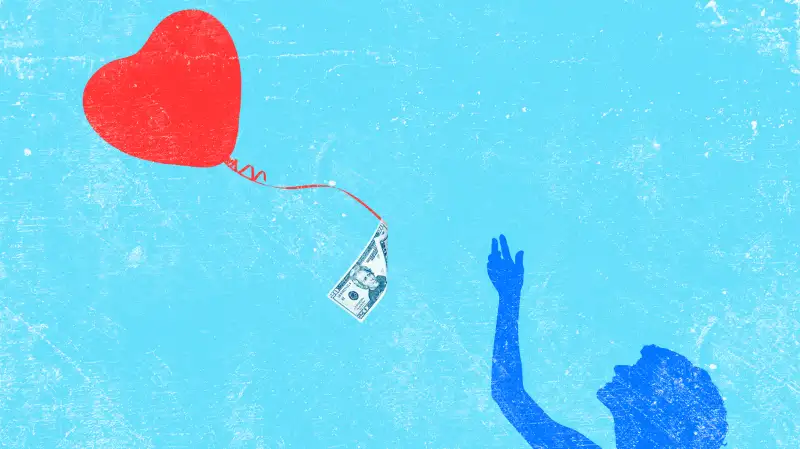The Truth About Valentine's Day Spending

Whether you’re one of those cynics who thinks Valentine’s Day is just a holiday ginned up by the card, flower, and jewelry industries, or whether you go all in with the hearts and chocolate, you might be surprised to learn how much people spend—and who spends the most.
According to the National Retail Federation, only about 55% of Americans celebrate Valentine’s Day, but those who do will shell out an average of $146.84, up a few bucks from last year’s average of $142.31. In total, Valentine’s Day spending is expected to hit $19.7 billion this year.
What are American lovebirds buying for that money? Flowers, trinkets, and candy of course—we’ll spend $1.7 billion just on sweet treats—but also $4.5 billion on romantic dinners out (at White Castle even) and tickets to movies, shows, or other attractions. About a quarter of respondents say they’ll give experience gifts this year, and almost half say they’d like to receive such a gift.
Just over 90% of respondents are buying Valentine’s Day gifts for their significant others—and spending some $12 billion in the process—but it's not just romantic partners who feel the love on this holiday. We spend an average of just under $28 each on cards, gifts, and other expressions of sentiment for family members like kids and parents, another roughly $7 each on kids’ teachers and classmates, and nearly $6 each on coworkers.
Read next: 14 Ways to Celebrate Valentine's Day on the Cheap
Here's a tip: A survey from Discover found that if someone tells you “don’t bother” with a Valentine’s Day gift, you should consider how well you know the person—and whether or not you want this to become a litmus test of your relationship. Of the 75% of survey respondents who demurred on receiving a gift, only about a quarter say they meant it, while about half would like their partner to go ahead and buy them something anyway.
Young adults are more likely to splurge on their baes come Valentine’s Day, the Discover survey found: Adults under 35 years old plan to spend an average of $185, or about $40 more than survey respondents overall. That could be because they’re more likely to be in the head-over-heels phase of a new relationship — which isn’t generally conducive to fiscal responsibility.
Another survey, this one from Offers.com, lends more credence to this theory. While it finds that Americans will spend less on Valentine’s Day than the NRF’s survey predicted, it still reflects many of the same sentiments. On average, Offers said we’ll spend $45 on Valentine’s Day, up almost 20% from last year, but that spending isn’t divided equally. Men are more apt to splurge than women, and single people, just over half of whom said won’t let being unattached stop them from celebrating Valentine’s Day, will spend an average of $37—probably on a night out, which single people are five percentage points likelier to do on Valentine’s Day than their married counterparts.
Roughly 80% of people who are dating, engaged, or married celebrate Valentine’s Day, although married couples have less of an appetite for hearts and flowers. People in relationships tend to spend more, with people who are dating dropping an average of $49 on Valentine’s Day gifts.
This largesse gets curtailed once the relationship gets more serious, though: People who are engaged spend a little bit less, while marrieds spend less still. Nearly half of people who are married said they’ll just spend Valentine’s Day at home on the sofa. And about a quarter of respondents think the whole holiday is just a retail gimmick. What’s the Valentine’s Day equivalent of “Bah, humbug”?
